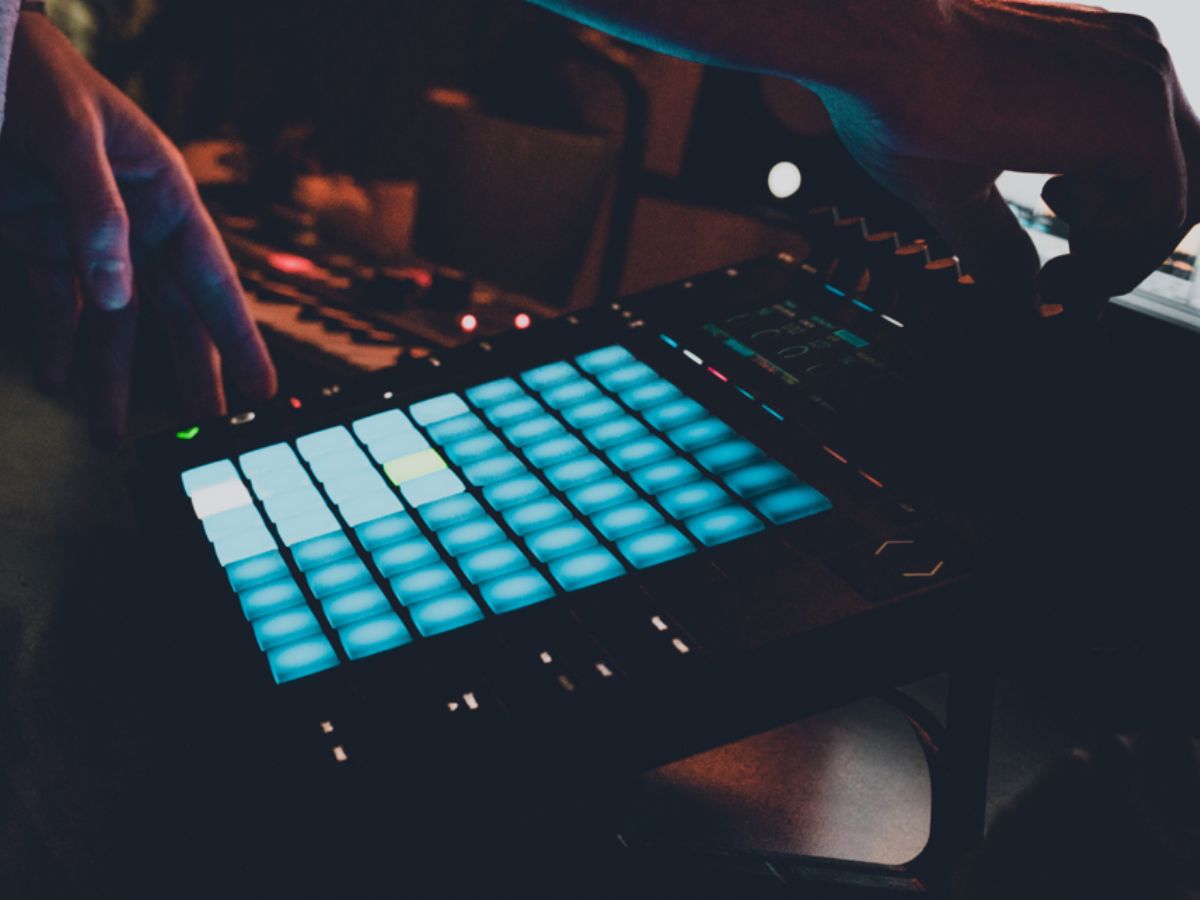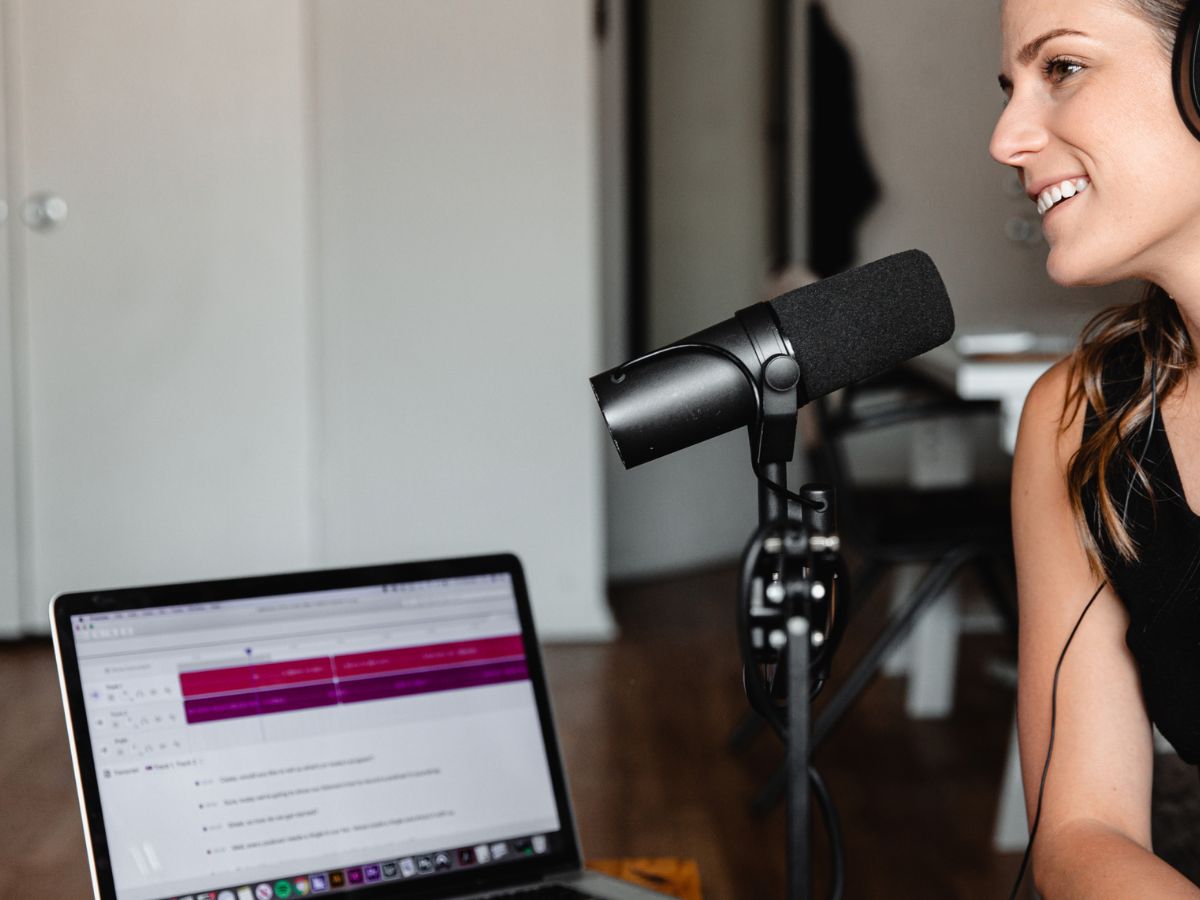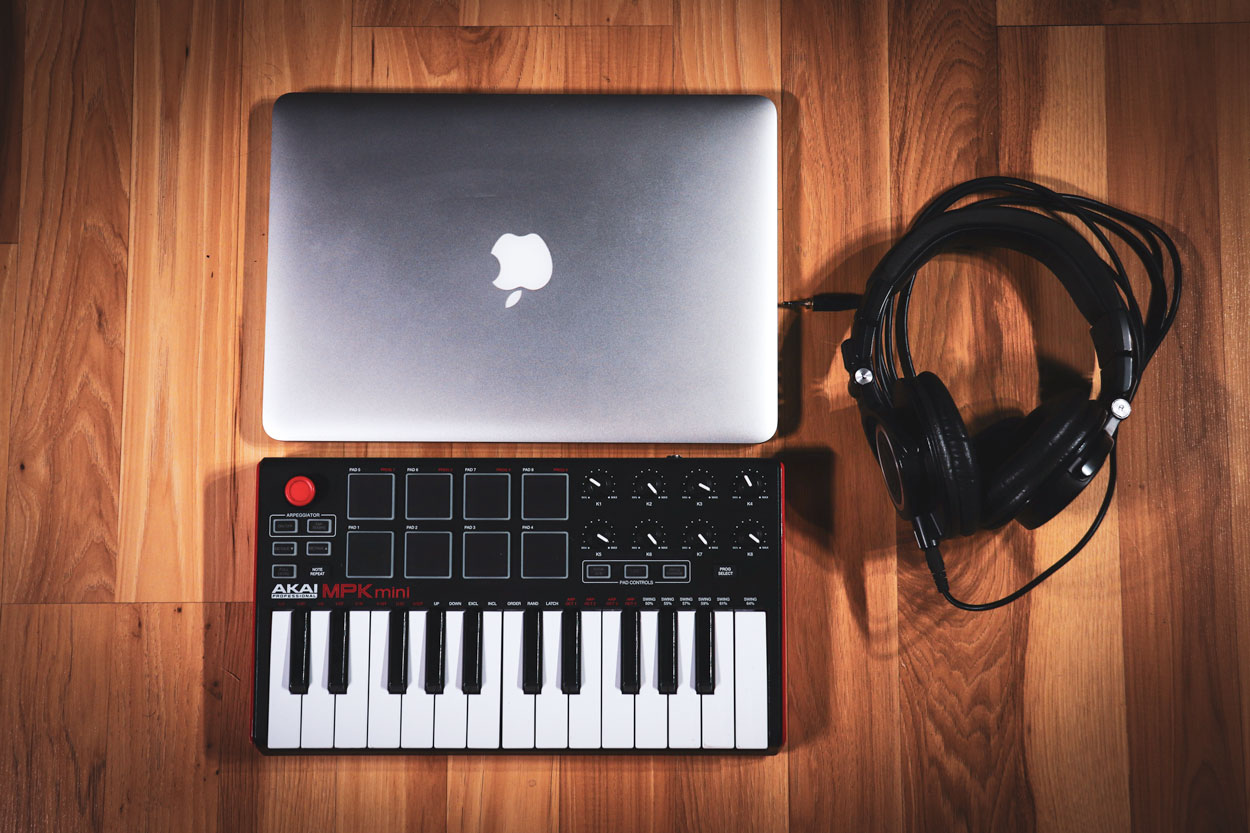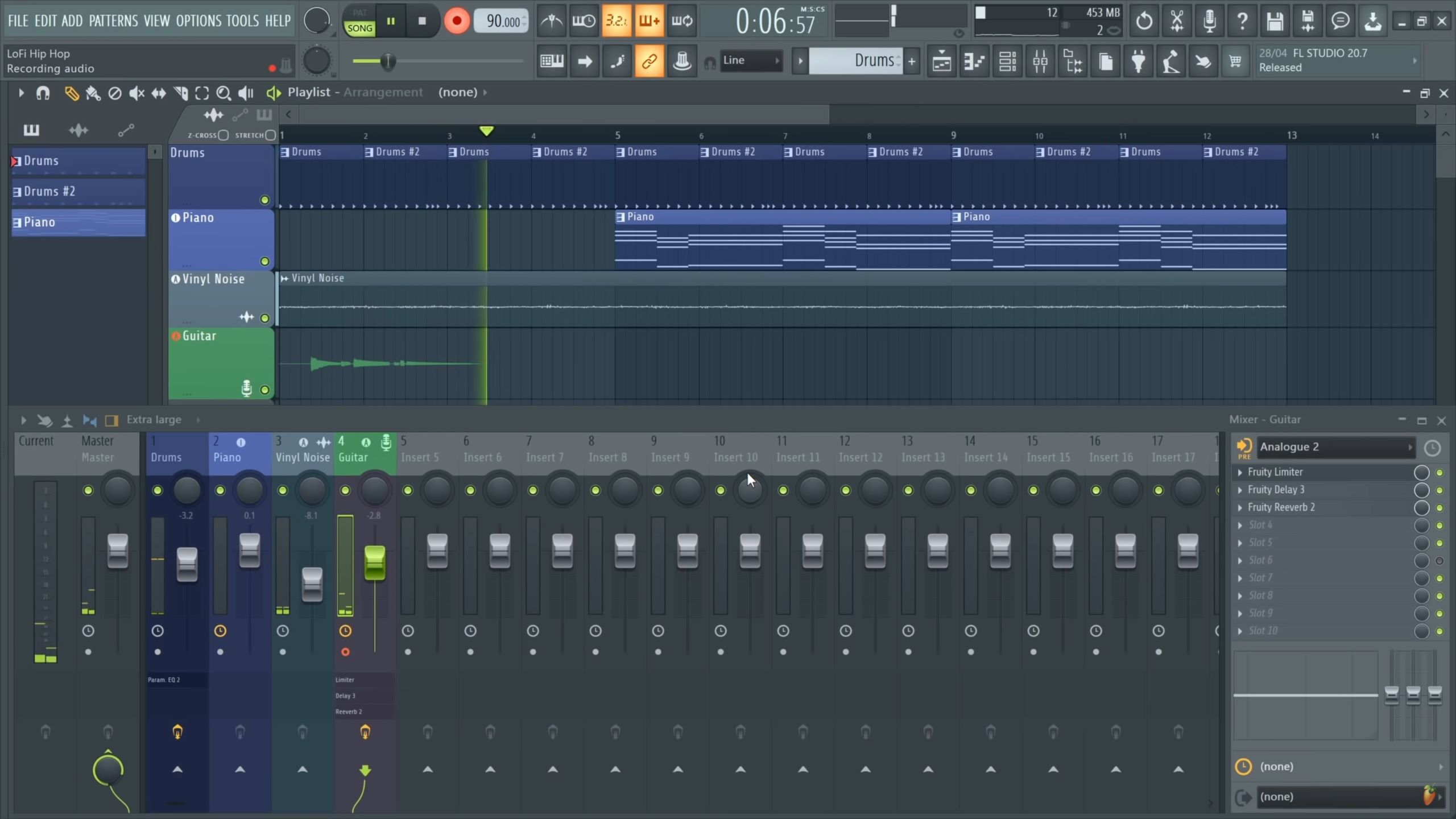

Hip Hop
How To Make Hip-Hop Beats On Reason
Modified: February 22, 2024
Learn how to create professional-quality hip-hop beats on Reason. Get step-by-step tutorials, tips, and tricks for producing your own unique sound.
(Many of the links in this article redirect to a specific reviewed product. Your purchase of these products through affiliate links helps to generate commission for AudioLover.com, at no extra cost. Learn more)
Table of Contents
Introduction
Hip-hop music has been at the forefront of popular culture for decades, captivating listeners with its infectious beats, powerful lyrics, and unparalleled energy. The genre has evolved and diversified, giving rise to countless artists who have left an indelible mark on the music industry.
One of the key elements that make hip-hop music so distinct is the beats. These rhythmic foundations serve as the backbone for the lyrics and set the tone for the entire song. With advancements in technology, it has become easier for anyone with a passion for music to create their own hip-hop beats.
In this article, we will explore how to make hip-hop beats using Reason. Reason is a powerful and versatile digital audio workstation (DAW) that offers a comprehensive set of tools, instruments, and effects. Whether you’re a seasoned producer or just starting out, Reason provides everything you need to bring your hip-hop beats to life.
Throughout this article, we will delve into the step-by-step process of creating hip-hop beats in Reason. From selecting the right instruments and samples to arranging and mixing your beats, we will cover it all. So, whether you want to make hard-hitting trap beats or laid-back boom bap grooves, this guide will equip you with the knowledge and skills to unleash your creativity.
Before we dive into the specifics, it’s important to note that making hip-hop beats is a highly creative process. While there are certain techniques and guidelines to follow, don’t be afraid to experiment and add your own unique touch. After all, hip-hop is all about self-expression and pushing boundaries.
So, let’s get started on this exciting journey of creating hip-hop beats in Reason!
Getting Started with Reason
Before diving into the world of creating hip-hop beats in Reason, it’s important to familiarize yourself with the software and its interface. Reason offers a user-friendly environment that allows for seamless music production. Here are a few key steps to help you get started:
- Install Reason: Begin by downloading and installing Reason on your computer. Follow the instructions provided by the manufacturer to ensure a successful installation.
- Launch Reason: Once installed, launch the Reason application. You will be greeted with the main Reason interface, which consists of a virtual rack where you can add various instruments, effects, and MIDI devices.
- Create a New Project: Click on “New Project” to start a new musical project. Give your project a name and choose the desired location to save it on your computer.
- Select a Template: Reason provides a range of templates to choose from, depending on your workflow and preferences. You can select a blank template or choose from various pre-made templates that cater specifically to hip-hop music production.
- Choose Your Audio Settings: Before you start creating beats, make sure to configure your audio settings. This includes selecting the audio device and setting the sample rate and buffer size according to your hardware specifications and preferences.
- Familiarize Yourself with the Interface: Take some time to explore the Reason interface. Familiarize yourself with the different sections, such as the sequencer, the mixer, and the rack. Understanding the layout and functionality of these sections will make your workflow smoother.
- Learn Keyboard Shortcuts: Reason offers a wide range of keyboard shortcuts to speed up your production process. Take some time to learn the commonly used shortcuts and their functions. This will save you time and enhance your overall productivity.
By following these steps and familiarizing yourself with the Reason interface, you will be ready to dive into the exciting world of hip-hop beat production. So, let’s move on to the next step and explore the crucial task of choosing the right instruments and samples for your beats.
Choosing the Right Instruments and Samples
When it comes to creating hip-hop beats in Reason, selecting the right instruments and samples is crucial for achieving the desired sound. Here are some key considerations to keep in mind:
Drum Kits: The foundation of any hip-hop beat is the drum pattern. While Reason comes with a variety of built-in drum kits, you may also consider using third-party drum sample libraries for a wider range of sounds. Look for drum kits that feature punchy kicks, crisp snares, and a diverse selection of hi-hats and percussions.
Bass Instruments: A solid bassline adds depth and groove to your hip-hop beats. Reason offers a range of bass instruments, including analog-style synthesizers, sampled bass guitars, and even electric piano emulations that can be tweaked to create a bass sound that suits your style.
Lead and Melody Instruments: To add melody and musicality to your hip-hop beats, consider using instruments like synthesizers, pianos, or even vocal samples. Experiment with different sounds and melodies to find the perfect match for your beat.
Sample Packs: Sample packs are a treasure trove of ready-made sounds that can add texture and authenticity to your hip-hop beats. Look for sample packs that specialize in hip-hop or urban genres, as they often include drum loops, one-shots, and melodic samples that can be used as building blocks for your beats.
Effects: Effects play a crucial role in shaping the sound of your hip-hop beats. Reason offers a wide range of effects, including EQ, compression, reverb, and delay. Experiment with these effects to enhance the overall mix and create a sense of space and atmosphere in your beats.
Remember, the key is to find instruments and samples that resonate with your creative vision. Don’t be afraid to mix and match different sounds to create something unique. Spend time exploring and experimenting with different instruments and samples until you find a combination that represents your style and gives your beats the desired impact.
Now that you have a solid understanding of selecting the right instruments and samples, let’s move on to the next step: creating the bassline for your hip-hop beat.
Creating the Bassline
The bassline is a crucial element in hip-hop beats, providing depth and groove to the overall composition. When creating a bassline in Reason, there are several approaches you can take:
Using a Synthesizer: Reason offers a wide range of synthesizers that can be used to create unique and powerful bass sounds. Experiment with different waveforms, filters, and modulation options to craft a bassline that complements your beat. Pay attention to the envelope settings to control the attack, decay, sustain, and release of the sound.
Sampling a Bass Guitar: If you prefer a more organic and realistic bass sound, consider sampling a bass guitar. Reason allows you to import your own samples or use pre-made samples to create your bassline. Look for samples that capture the character and tonality of a bass guitar, and apply any necessary effects to shape the sound to your liking.
Using Reason’s Combinator: The Combinator device in Reason allows you to combine multiple instruments and effects into a single unit. You can use this powerful tool to layer different bass sounds and add additional effects such as distortion or chorus to create a more complex and textured bassline.
Once you’ve chosen your approach, it’s time to start creating the bassline. Begin by establishing the root note and key of your beat. This will help you stay in harmony with the other elements in your composition. Experiment with different note progressions and rhythms to find a bassline that complements the overall vibe of your beat.
Remember, the bassline should provide a solid foundation for the rest of the instruments and elements in your beat. It should support and enhance the rhythm while adding depth and character. Pay attention to the timing, dynamics, and tonal qualities of your bassline to ensure it fits seamlessly into the composition.
Don’t be afraid to experiment and try out different variations of your bassline. Sometimes a simple variation or modulation can add interest and catch the listener’s ear. Trust your instincts and let your creativity guide you as you craft the perfect bassline for your hip-hop beat.
With the bassline in place, it’s time to move on to the next step: layering drums and percussion to create a rhythmic foundation for your beat.
Layering Drums and Percussion
In hip-hop beats, drums and percussion play a crucial role in creating the rhythmic foundation and driving the energy of the music. When layering drums and percussion in Reason, there are several techniques and considerations to keep in mind:
Choose the Right Drum Sounds: Start by selecting drum sounds that fit the style and vibe of your hip-hop beat. Look for punchy kicks, snappy snares, and crisp hi-hats. Experiment with different samples and tweak their parameters to achieve the desired sound.
Layering Kicks: Layering multiple kicks can add depth and impact to your drum pattern. Consider using a combination of kicks with different characteristics, such as a deep and subby kick layered with a punchy kick, to create a rich and powerful sound.
Enhance Snare Sounds: To make your snare sound more dynamic, consider layering it with other percussion elements such as claps or snaps. This can add texture and make the snare stand out in the mix. Experiment with different combinations until you find the right blend.
Add Percussion Elements: Percussion elements like shakers, tambourines, and congas can add groove and complexity to your drum pattern. Experiment with different patterns and placements to create interesting rhythms and accents.
Utilize Drum Modules: Reason offers powerful drum modules like Kong and Redrum, which allow you to create complex drum patterns using multiple samples and parameters. Take advantage of these modules to layer and program your drums more effectively.
Consider Velocity and Timing: Varying the velocity and timing of your drum hits can add a human-like feel to your beat. Experiment with subtle variations to make your groove more organic and dynamic. Use Reason’s sequencer or MIDI controller to fine-tune the velocity and timing of individual drum hits.
When layering drums and percussion, it’s important to strike a balance between creating a full and powerful sound without overwhelming the mix. Pay attention to the levels and frequencies of each drum element and make necessary adjustments to ensure that they work together harmoniously.
Don’t be afraid to experiment and try out different combinations of drum sounds and patterns. Hip-hop is a genre that thrives on innovation and creativity, so don’t be afraid to break the rules and come up with your own unique drum arrangements.
With your drums and percussion layered, it’s time to move on to the next step: adding melodies and chords to give your hip-hop beat its musical essence.
Adding Melodies and Chords
Adding melodies and chords is a crucial step in creating a memorable and engaging hip-hop beat. This is where you can infuse your own creativity and musicality into the composition. Here are a few tips to help you add melodies and chords in Reason:
Choose the Right Instruments: Consider using instruments like synthesizers, pianos, or even sampled instruments to create your melodies and chords. Explore different sounds and timbres to find the ones that align with the mood and style of your beat.
Establish the Key and Scale: Before you start creating melodies and chords, establish the key of your beat. This will help you stay in harmony with the rest of the elements. You can use Reason’s built-in keyboard or external MIDI controller to experiment with different scales and find the right notes.
Create Catchy Melodies: Craft a catchy and memorable melody that will resonate with the listener. Experiment with different rhythms, note sequences, and intervals to create an interesting and engaging melody. Keep in mind the overall feel and emotion you want to convey in your hip-hop beat.
Harmonize with Chords: Once you have your melody, harmonize it with chords to create a fuller and more musical sound. Experiment with different chord progressions and voicings to find the ones that complement the melody and enhance the overall composition.
Layer and Blend Sounds: Consider layering different instruments or adding effects to create unique textures and dynamics in your melodies and chords. Don’t be afraid to experiment with different sounds and settings to find the perfect combination.
Utilize Reason’s Sequencer: Arrange your melodies and chords using Reason’s sequencer or MIDI editor. This will allow you to fine-tune the timing, velocity, and length of each note. You can also experiment with automation to add expressive movements and variations to your melodies and chords.
Remember, the melodies and chords should complement the other elements in your hip-hop beat and enhance the overall vibe. Pay attention to the timing, note lengths, and dynamics to ensure that they blend seamlessly with the drums, bassline, and other elements.
Don’t be afraid to explore different musical styles and genres when adding melodies and chords. Hip-hop is known for its fusion and experimentation, so feel free to incorporate elements from other genres to create a unique and captivating sound.
With your melodies and chords in place, it’s time to move on to the next step: incorporating synth and effect sounds to add more depth and character to your hip-hop beat.
Incorporating Synth and Effect Sounds
Incorporating synth and effect sounds is a key step in adding depth, texture, and character to your hip-hop beat. Reason provides a wide range of instruments, synthesizers, and effects that can help you achieve the desired sonic palette. Here are some tips to consider:
Experiment with Synthesizers: Reason offers a variety of synthesizers that can produce unique and versatile sounds. Whether you’re looking for warm pads, gritty leads, or atmospheric textures, explore different synthesizers and experiment with their parameters to find the right sound that complements your beat.
Layer Synth Sounds: Layering multiple synth sounds can add richness and complexity to your composition. Try combining different synth patches to create unique textures and harmonies. Adjust the volume and panning of each layer to find the right balance in the mix.
Add Effects: Effects play a crucial role in shaping the sound of your hip-hop beats. Reason offers a wide variety of effects such as EQ, reverb, delay, distortion, and modulation effects. Experiment with these effects to add depth, space, and character to your synth sounds. Apply them to individual tracks or use them as send/return effects to affect multiple sounds at once.
Create Textures and Transitions: Use synth and effect sounds to create interesting textures and transitions in your beat. Consider incorporating risers, sweeps, and other transitional effects to add excitement and movement between different sections of your beat. These elements help enhance the overall dynamic structure of your composition.
Automate Parameters: Use Reason’s automation features to create expressive and evolving synth and effect sounds. Automating parameters such as filter cutoff, resonance, and modulation will add movement and variation to your sounds, making them more dynamic and engaging.
Experiment with Sampling: Explore the possibilities of sampling in Reason. You can sample unique sounds or record your own audio and manipulate it using Reason’s tools and effects. This allows you to create custom textures and one-of-a-kind sounds for your beats.
Remember, the goal is to use synth and effect sounds to enhance the overall composition and create a unique sonic signature. Pay attention to how these sounds interact with the drums, bassline, melodies, and chords. Keep experimenting and pushing the boundaries to find your own distinct sound.
With the synth and effect sounds incorporated, it’s time to move on to the next step: arranging and structuring your hip-hop beat to create a cohesive and compelling musical journey.
Arranging and Structuring Your Beat
Arranging and structuring your hip-hop beat is essential for creating a cohesive and captivating musical journey. This step involves organizing the different elements of your beat into sections that flow seamlessly. Here are some guidelines to help you with the arrangement process:
Intro: Start your beat with an attention-grabbing intro that sets the tone for the rest of the composition. Consider using a stripped-down version of your main elements, gradually building up the energy and anticipation for what’s to come.
Verse: The verse is where the main body of the lyrics will be delivered. Keep the instrumentation relatively minimal during this section, allowing the vocals to take center stage. Gradually introduce additional elements to build momentum and maintain interest throughout the verse.
Pre-Chorus/Build-Up: The pre-chorus or build-up section acts as a transition between the verse and the chorus. Increase the energy and tension by adding extra layers, effects, or rhythmic elements. This section should build anticipation for the upcoming chorus.
Chorus: The chorus is the most memorable and catchy part of the beat. Make it impactful by introducing new elements, expanding the arrangement, or adding harmonies to create a fuller sound. This section should be the focal point of the beat, leaving a lasting impression on the listener.
Bridge/Interlude: Consider incorporating a bridge or interlude section to add variation and excitement to your beat. This section can feature different instrumentation, unique textures, or a change in rhythm to create contrast and keep the listener engaged.
Outro: Conclude your beat with a well-crafted outro. You can gradually fade out certain elements or add a final flourish to leave a lasting impression. The outro should provide a sense of closure and wrap up the beat smoothly.
When structuring your beat, pay attention to the dynamics and flow of the different sections. Build momentum and interest by gradually introducing new elements, adding variations, and creating contrasting sections. Use transitions, automation, and effects to create smooth segues between different parts of the beat.
Remember, the arrangement and structure of your beat should complement the lyrics and enhance the overall storytelling. Don’t be afraid to experiment with new ideas, break away from traditional structures, and infuse your own unique style into the arrangement process.
With your beat arranged and structured, it’s time to move on to the next step: mixing and mastering. This step will ensure that your beat sounds polished and professional when played on different audio systems.
Mixing and Mastering Techniques
Mixing and mastering are crucial steps in the production process that help polish your hip-hop beat and ensure it sounds professional and balanced. Here are some essential techniques to consider when mixing and mastering your beat in Reason:
Balance the Levels: Start by adjusting the volume levels of each individual track to achieve a balanced mix. Use Reason’s mixer or channel strip to control the volume faders and ensure that no element is overpowering or getting lost in the mix.
Pan the Elements: Pan the different elements across the stereo field to create width and separation. This helps create a sense of space and clarity in the mix. Experiment with panning instruments, drums, and effects to find the best placement for each element.
EQ and Carve the Frequencies: Use EQ to sculpt the different elements and ensure they sit well together in the mix. Cut out any unnecessary frequencies and make room for the essential elements to shine. Boost or cut certain frequencies to enhance the tonality and presence of each element.
Control Dynamics with Compression: Apply compression to control the dynamics of individual elements and create a more consistent and polished sound. Use Reason’s compressor or dynamics processor to shape the attack, release, and sustain of each track. Also, consider using parallel compression to add more impact and presence to certain elements, such as drums.
Add Spatial Effects: Use reverb and delay to add depth, space, and a sense of realism to your mix. Experiment with different reverbs to find the ones that suit your elements and make them sound cohesive. Use delay to create interesting echoes and rhythmic effects that enhance the overall groove of your beat.
Make it Cohesive with Bus Processing: Group similar elements, such as drums or background vocals, into buses or subgroups. Apply common processing, such as EQ and compression, to these buses to create a more cohesive and unified sound. This helps tie different elements together and enhances the overall mix.
Mastering the Final Mix: Once your mix is complete, it’s time to master the final version of your hip-hop beat. Use Reason’s mastering suite or export the mix to a separate mastering application to add final touches to the overall sound. Apply light compression, EQ adjustments, and limiting to ensure the volume levels are balanced and the dynamics are controlled. Remember, mastering is the final polish that brings your beat to its full potential.
Throughout the mixing and mastering process, it’s important to trust your ears and make adjustments based on what sounds best to you. Take breaks and listen to your mix on different audio systems to ensure it translates well across various platforms.
With your hip-hop beat mixed and mastered, it’s time to move on to the final step: exporting your beat and sharing it with the world.
Exporting Your Hip-Hop Beats
Once you’ve completed mixing and mastering your hip-hop beat in Reason, it’s time to export it so that you can share it with others or use it in your music projects. Here are the steps to export your beat:
- Select the Export Settings: In Reason, locate the export settings menu. Choose the desired format for your export, such as WAV or MP3. Consider the audio quality and compatibility with the platforms or devices you plan to share your beat on.
- Set the Export Range: Specify the start and end points of the beat that you want to export. This allows you to export the entire beat or select specific sections for exporting.
- Choose the Bit Depth and Sample Rate: Set the desired bit depth and sample rate for your export. Higher bit depth and sample rates generally result in better audio quality, but also larger file sizes.
- Enable Normalization: Consider enabling normalization if you want to adjust the overall volume level of the exported beat to a standard level. This helps ensure consistent volume levels when playing the beat on different systems.
- Check File Naming and Location: Verify the file naming convention and choose the location where you want to save the exported beat on your computer.
- Export the Beat: Once you have configured all the settings, click on the export button to start the export process. Allow Reason to process the beat and generate the exported file.
- Listen and Verify: After the export is complete, take the time to listen to the exported beat and ensure that it sounds as expected. Pay attention to any potential artifacts or issues that may have occurred during the export process.
Once your beat is exported, you can share it on various platforms and with other artists or collaborators. You can upload it to music streaming platforms, social media, or your own website. Remember to properly credit the beat if you plan to share it publicly or collaborate with other artists.
Exporting your hip-hop beat is an exciting step, as it allows you to showcase your talent and share your music with the world. Take pride in your work and continue to refine your craft as you embark on your journey as a producer.
Congratulations! You’ve successfully completed the process of creating, mixing, mastering, and exporting your very own hip-hop beat using Reason. Now, it’s time to let your creativity and passion flourish as you continue to create more beats and make your mark in the world of hip-hop music.
Conclusion
Congratulations on completing the journey of creating your own hip-hop beat using Reason! Throughout this guide, we’ve covered the essential steps from getting started with Reason to exporting your finished beat. Producing hip-hop beats requires a combination of technical skills, creativity, and a deep understanding of the genre.
We started by introducing the fundamentals of hip-hop music and the importance of beats in shaping the genre’s unique sound. We then explored the process of getting started with Reason, including installing the software, familiarizing yourself with the interface, and creating a new project.
We delved into choosing the right instruments and samples, emphasizing the significance of selecting drum kits, bass instruments, lead melodies, and percussion elements that align with your creative vision.
From there, we discussed the process of creating a solid bassline, layering drums and percussion to establish a rhythmic foundation, and adding melodies and chords to infuse your beat with musicality.
We explored the realm of incorporating synth and effect sounds to add depth and character to your beat, and touched upon arranging and structuring your beat to create a captivating musical journey.
Mixing and mastering techniques were then introduced, emphasizing the importance of achieving a balanced mix, utilizing various effects to enhance the sound, and mastering the final mix for a professional finish.
Finally, we discussed the steps involved in exporting your hip-hop beat, offering guidance on selecting the right settings, checking the file naming and location, and verifying the exported file to ensure it sounds as intended.
Now that you have a solid foundation in hip-hop beat production with Reason, it’s time to continue refining your skills, exploring new techniques, and allowing your creativity to shine. Remember to stay open-minded, experiment with different sounds and styles, and never stop pushing the boundaries of your creativity.
We hope that this guide has inspired you to continue your musical journey and create hip-hop beats that resonate with listeners worldwide. Whether you aspire to be a professional producer or simply enjoy making beats as a hobby, the possibilities are endless. So, fire up Reason, get in the groove, and let your beats take flight!











